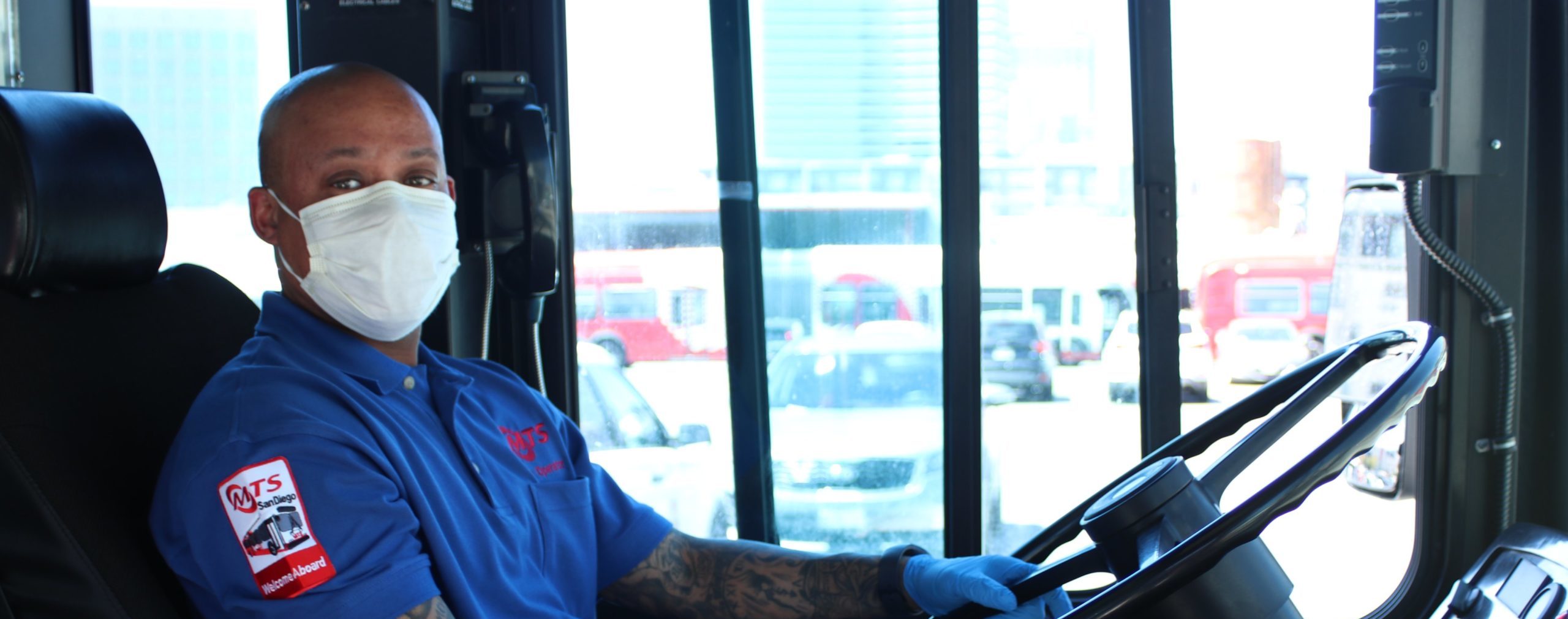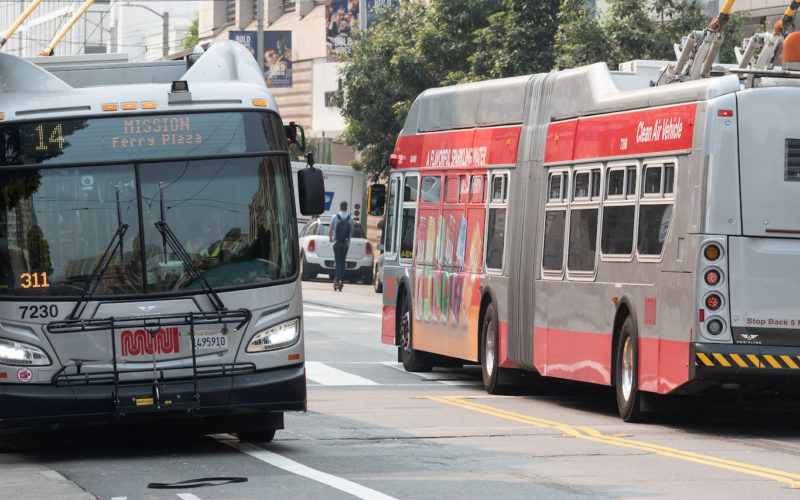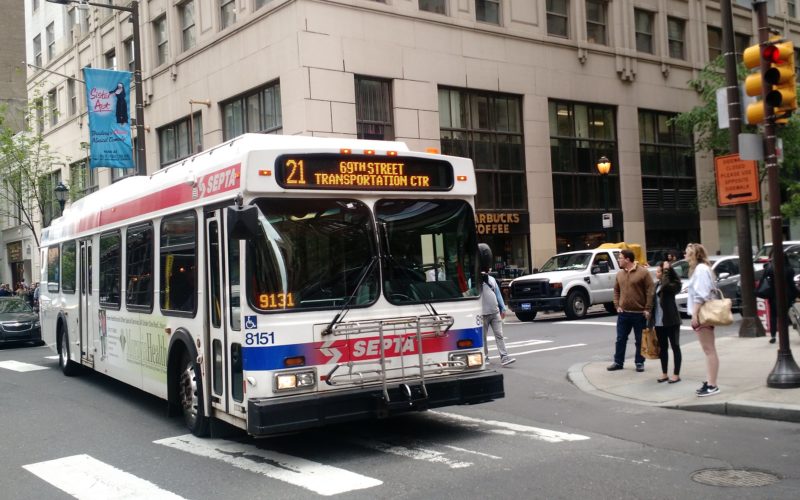
This post was written by guest contributor James Brasuell.
The importance of the bus has never been more apparent as it was during the early months of the Covid-19 pandemic. As transit agencies faced multiple crises–gutted ridership, budget deficits, and the risk of Covid-19 infection–bus drivers kept the wheels of the economy rolling. The ridership patterns of the pandemic also provided clear new evidence of the importance of the bus in transporting workers in essential industries: Multiple studies showed that bus riders who continued riding throughout the pandemic were more likely to be low-income and working in essential jobs.
In 2022, however, the national bus operator shortfall is making it harder and harder for transit agencies to get bus riders where they need to go. The problem predated the pandemic – throughout the late 2010s, agencies in cities like Denver, San Francisco, and St. Louis struggled to maintain a stable workforce. Since the pandemic, however, the damage wrought by operator shortages has expanded to include hobbling long-planned bus system redesign projects and related service frequency improvements. In April 2022, for example, Miami halted work on its Better Bus Network plan, postponing the launch of the system redesign until June 2023. The Metro Los Angeles system was forced to cut 12 percent of its bus trips during the pandemic, watering down the improvements promised by the NextGen bus system redesign rolled out to the public in January 2020. In October, Rhode Island’s RIPTA will be cutting back service on 21 bus routes because of a “historic worker shortage.” According to a recent APTA survey, more than nine in ten public transit agencies are having difficulty hiring new employees, with the position of bus driver being the most difficult position to hire.
But it’s not all doom and gloom. Transit agencies in two of the most expensive cities in the United States, New York and San Diego, have managed to hire and retain the workforce necessary to maintain bus service at pre-pandemic levels. The New York Metropolitan Transit Authority’s New York City Transit (NYCT) division and the San Diego Metropolitan Transit System (MTS) have found success by actively recruiting from the communities where transit riders are more likely to live, and by compensating operators at levels commensurate with their contribution to the health and prosperity of the country.
New York City Pays its People
As the transit agency that faced the dire and tragic consequences of the novel coronavirus in its first wave, the NYCT would have every excuse to drastically reduce its workforce and its service. Instead, NYCT is currently working with around 99 percent of its budgeted headcount of employees and is operating 100 percent of its pre-pandemic service levels. According to Craig Cipriano, chief operating officer of NYCT, the vacancy rate of the MTA’s 12,000 operator jobs typically hovers around 1 percent, but the NYCT accelerated its hiring process to maintain that figure during the pandemic, increasing class sizes for new drivers from 60 to over 100 by recruiting experienced operators and recent retirees to fill the necessary training capacity.
The main draw of NYCT bus operator jobs, according to Ciriano, is a competitive compensation package. The current minimum salary for an NYCT bus operator is $25.49 per hour, increasing to $36.4206 in the sixth year (by comparison, Los Angeles Metro only recently increased its starting pay for bus operators to $23 per hour). MTA employees are also offered three weeks vacation in the first year and pensions of more than $16,000 a year after ten years of service, increasing to $55,000 after 30 years. “Because of that, we always seem to have robust numbers that are waiting on the list to be called up. That list is usually in the neighborhood of tens of thousands of people,” Cipriano recently told TransitCenter.
Despite the relative attractiveness of the position, maintaining NYCT’s low job vacancy rate during the pandemic required extra outreach. The NYCT used the digital screens and static ads throughout its bus and rail systems to announce bus operator job openings. Cipriano says that the MTA’s Diversity Department also plays an essential role in recruitment by distributing bus operator job postings in the churches and local civic groups of predominantly Black and brown communities throughout New York City.
A final piece of the NYCT hiring puzzle: The MTA worked with the New York State Department of Motor Vehicles to make it easier for potential operators to renew their Commercial Driver Licenses (CDLs). The time period between passing the MTA’s driver’s test and receiving a hiring, according to Cipriano, can occasionally be long enough for applicants’ CDLs to expire. Recognizing that obstacle, the DMV is now setting aside dedicated staff and time for potential operators to renew or complete their CDLs–capacity for about 60 CDL processes at any time, according to Cipriano–without being delayed by the DMV processes of the general population.
San Diego MTS Stays on the Go
Like the MTA, the San Diego Metropolitan Transit System (MTS) benefits from a competitive salary package negotiated with its drivers union in 2020. The compressed pay scale increased initial salaries, reducing a wage gap between new hires and older drivers, and included a raise a couple of years into the job, according to MTS CEO Sharon Cooney. These changes altered the previous perception that newly-hired drivers would have to put in years of toil before getting a bump up in compensation. Drivers who were hired after August 1, 2022 also received a $5,000 signing bonus.
According to Cooney, MTS’s compensation package is part of the reason why the system was quickly able to bounce back to providing full service following the “surgical” service cuts it was forced to make during the height of the pandemic.
Pro-actively going out to the community, rather than waiting for applicants to somehow find MTS, was also part of the agency’s recipe. Rapid hiring events have provided a key component of MTS’s hiring success, easing the typical sluggish bureaucracy of the hiring process. “We would interview and hire on the spot for the jobs with bus drivers [during those events]” says Cooney. The series of expedited hiring events included one held at the Euclid Valley trolley station, “where there’s a lot of housing but not a lot of jobs,” according to Cooney. “We were able to get 12 people to sign up as bus operators that one day.”
MTS’ operators are about 80% male, which is illustrative of some of the structural barriers to hiring more operators. As Cooney describes it, becoming a bus operator “doesn’t lend itself to anyone with small children” because of the shifts and the rigid seniority structure that limits younger drivers’ choices of when to drive. To ease the burden on young parents, and especially mothers, MTS is exploring options for a childcare facility, and has identified several potential locations.
Connecting to the Larger Mission
Both the NYCT and the MTS highlight bus driver safety as a primary concern for retention. “Very early in the pandemic we were able to put up the shields, the driver barriers, and that actually has been really helpful in making drivers feel safer,” says Cooney. “There was some concern at first about feeling claustrophobic but no, everybody loves them.” Cooney also credits her agency’s text communication system with providing an extra layer of connection and safety for drivers.
In New York, NYCT formed a task force, led by Frank Annicaro, senior vice president of buses for NYCT, to implement specific driver safety measures, such as improved barriers and new conflict management training, especially along routes with higher incidents of bus driver assaults. Both the NYCT and the MTS can point to a recent track record of low infection rates among their bus operators as signs of clear progress protecting bus operators.
Even with two agencies getting resourceful about retention and recruitment, it’s hard for public transit agencies to compete with more agile private companies or even some other public sector agencies in a tight job market, where opportunities to work safely from home or win demands for better working conditions and higher salaries have never been so abundant. “It’s a different job market out there,” says Cipriano. “It’s not only all about the salary, the amount of money per hour, but it’s about the benefit, the long term pension.”
Cooney says transit agencies should remember that the reasons people aren’t working at transit agencies are as varied as the people that are working. “You have to have multiple approaches to address the concerns. So if it’s the culture, you have to change that. If it’s the wages, you have to change that.”
The stakes for figuring out the hiring and retention equation couldn’t be higher, and whether agencies find ways to fix the problem will have big consequences not only for transit riders but for the function of our cities’ economies. All the service cuts and postponed system redesigns are hampering efforts to win back riders, digging transit agencies deeper into a cycle of declining revenues and poor performance. Overcoming these challenges might require a more virtuous cycle, but one in which transit systems and bus operators themselves are well equipped to play a role.
“People want to be part of the team,” Cipriano told TransitCenter. “An important piece of retention is not only about the dollars and cents but also about a sense of purpose–feeling that they’re part of the bigger good.”
 What’s Going on With Transit Service at the Seven Highest Ridership U.S. Cities? SF Edition
What’s Going on With Transit Service at the Seven Highest Ridership U.S. Cities? SF Edition
As of March 2022, SFMTA was operating 88% of pre-pandemic service and added back even more service in July.
Read More What’s Going on With Transit Service at the Seven Highest Ridership U.S. Cities? Philly Edition
What’s Going on With Transit Service at the Seven Highest Ridership U.S. Cities? Philly Edition
SEPTA reduced service during last winter's Omicron surge. However, service levels rebounded significantly by March 2022, especially on bus and metro rail.
Read More